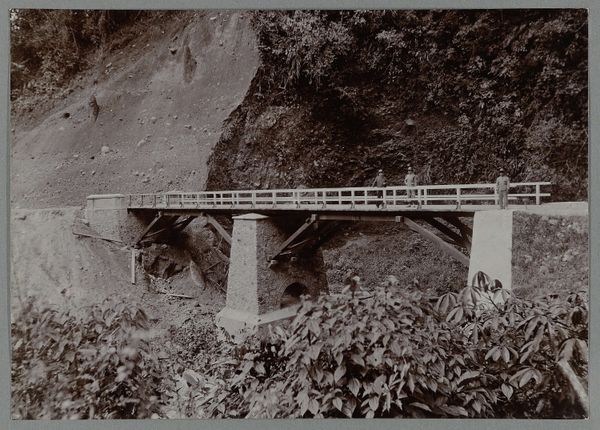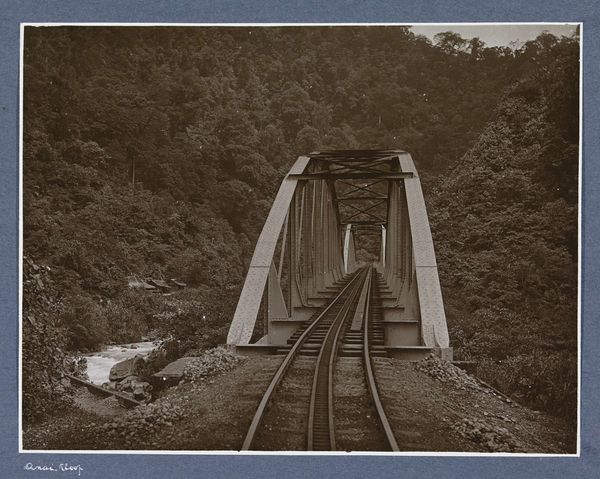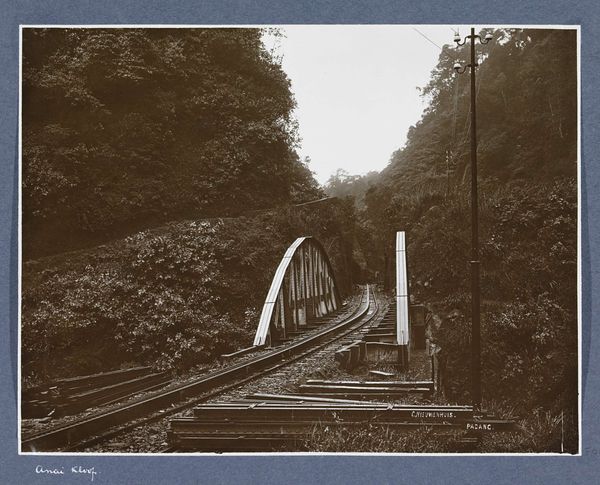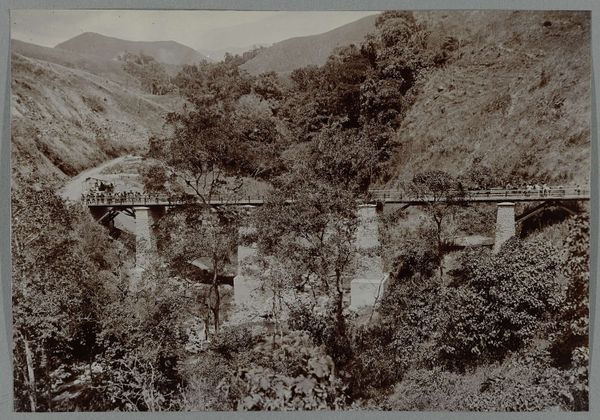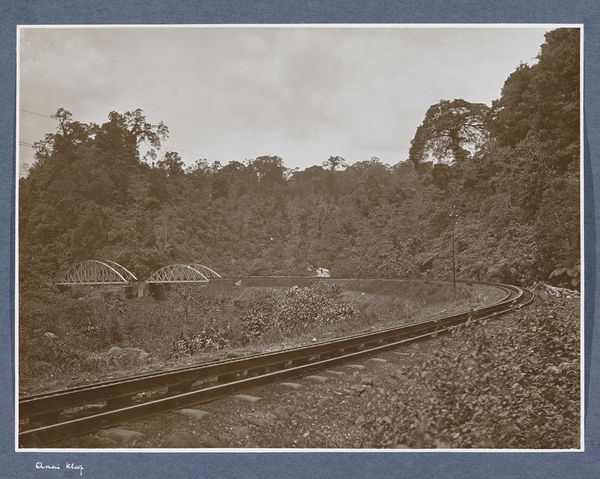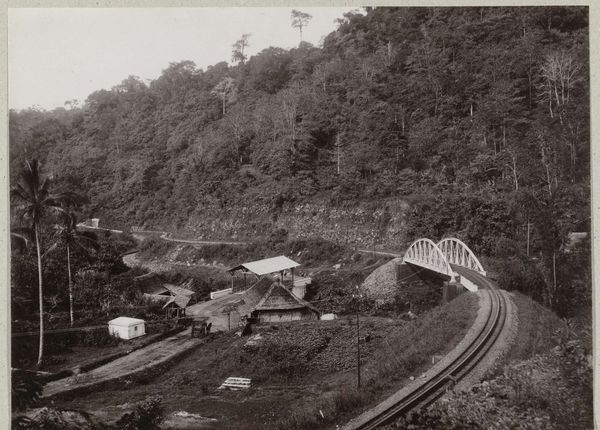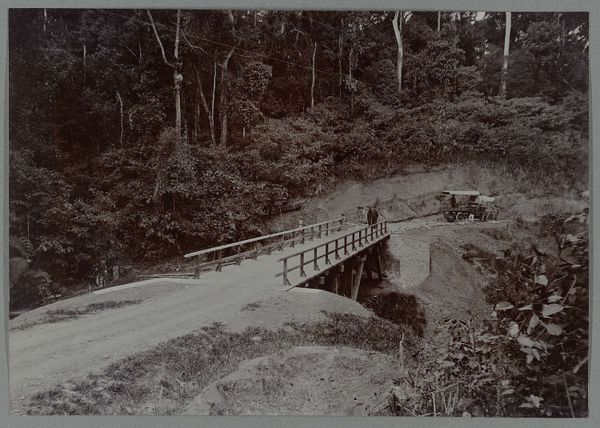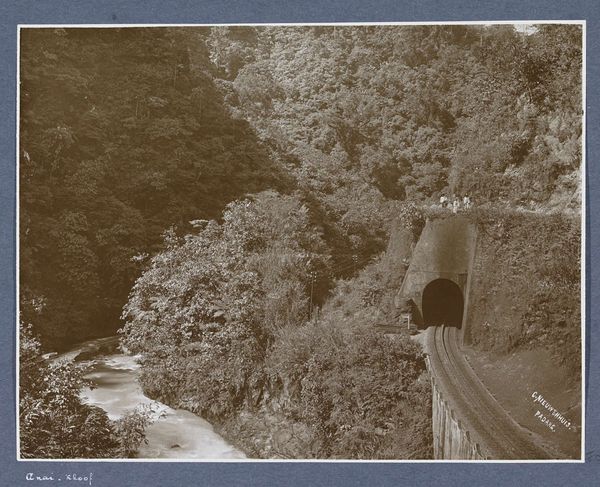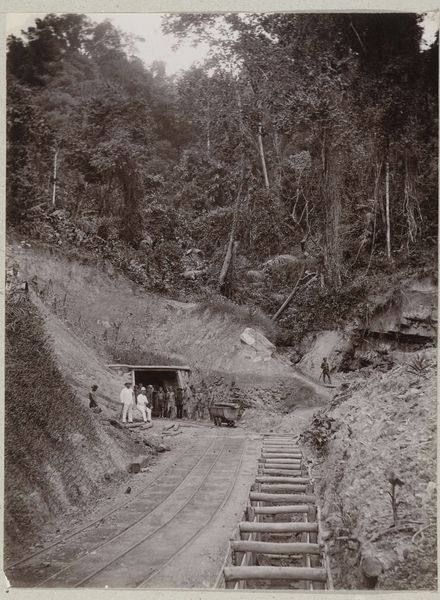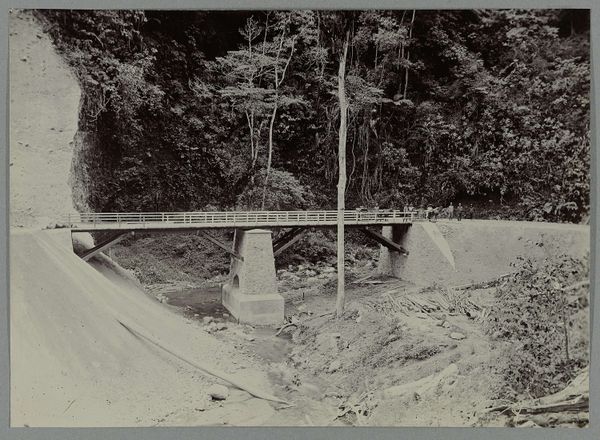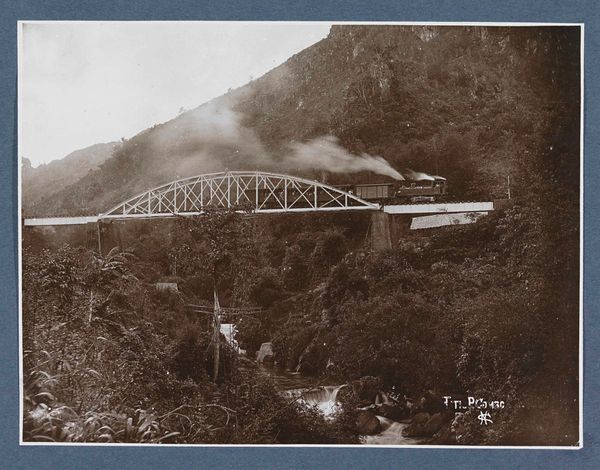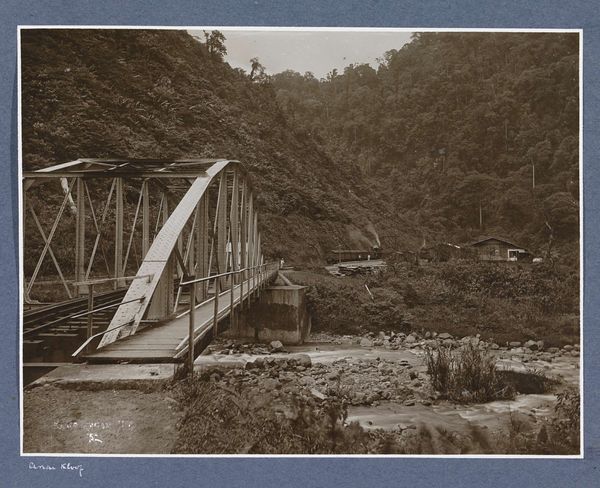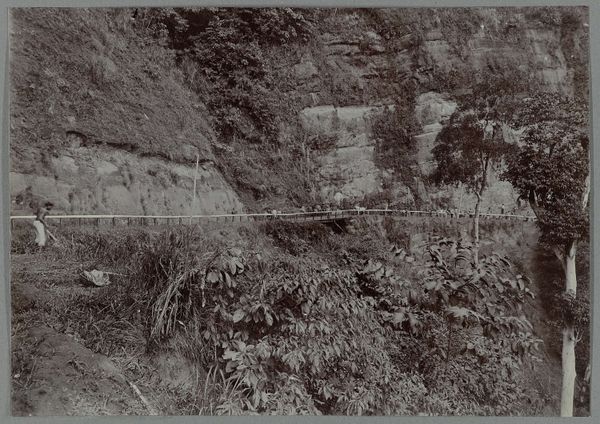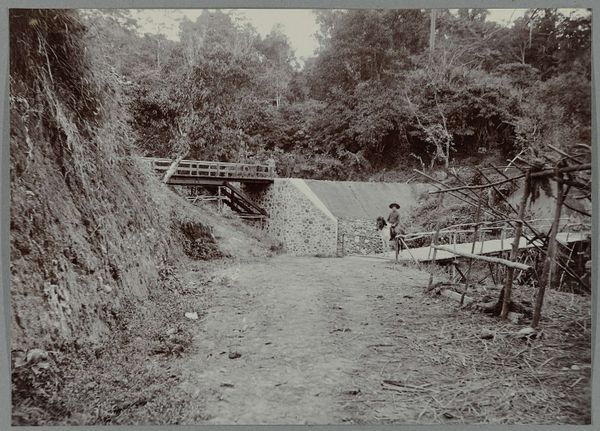
Spoorwegtunnel en rijtuig in de Anaikloof op Sumatra c. 1900 - 1920
0:00
0:00
christiaanbenjaminnieuwenhuis
Rijksmuseum
print, photography
# print
#
landscape
#
photography
#
orientalism
#
realism
Dimensions: height 209 mm, width 273 mm
Copyright: Rijks Museum: Open Domain
Curator: What strikes me immediately about this photograph is the weight of the unseen. The dark mouth of the tunnel, the implicit colonial project it represents... Editor: Indeed. This print, “Spoorwegtunnel en rijtuig in de Anaikloof op Sumatra,” was taken circa 1900-1920 by Christiaan Benjamin Nieuwenhuis. Currently residing at the Rijksmuseum, it provides a compelling, if somewhat romanticized, vision of Dutch infrastructure in the East Indies. Curator: Romanticized, absolutely! Look at how the winding track cuts through the lush landscape. It speaks to this notion of "taming" the "exotic" and untamed. The visual contrast between the engineered railway and the enveloping jungle just leaps out at you, suggesting ideas around race, and particularly forced subjugation that allowed this "progress" to take place. Editor: Certainly, and viewing this through a lens of critical history, we understand railways like these were instruments of control as much as conduits for trade. The cool, factual tone often misses the forced labor behind building this very infrastructure. Curator: It's unsettling, isn’t it? This sepia-toned "slice of life" is actually loaded with the baggage of orientalist views and imperialist ambition. The native population are not represented in the photo. I question that absence and the historical amnesia that might accompany that erasure. Editor: Exactly. While this image offers insight into early 20th-century engineering and transportation in Sumatra, the crucial piece – the experience of the indigenous population and their complex relation to this colonial imposition is notably silent. Curator: It asks us to reconsider what progress truly means, doesn’t it? And who benefits? Editor: Precisely. It also allows for conversations around representation within visual culture. A quiet moment presented for contemplation with implications far from the landscape we initially percieved. Curator: An intriguing photograph then; aesthetically beautiful but politically complex, encouraging a far broader discourse around orientalism. Editor: Agreed. A poignant artifact that, when unpacked with care, reflects as much on the viewers' presumptions, as it reveals aspects of the past.
Comments
No comments
Be the first to comment and join the conversation on the ultimate creative platform.
